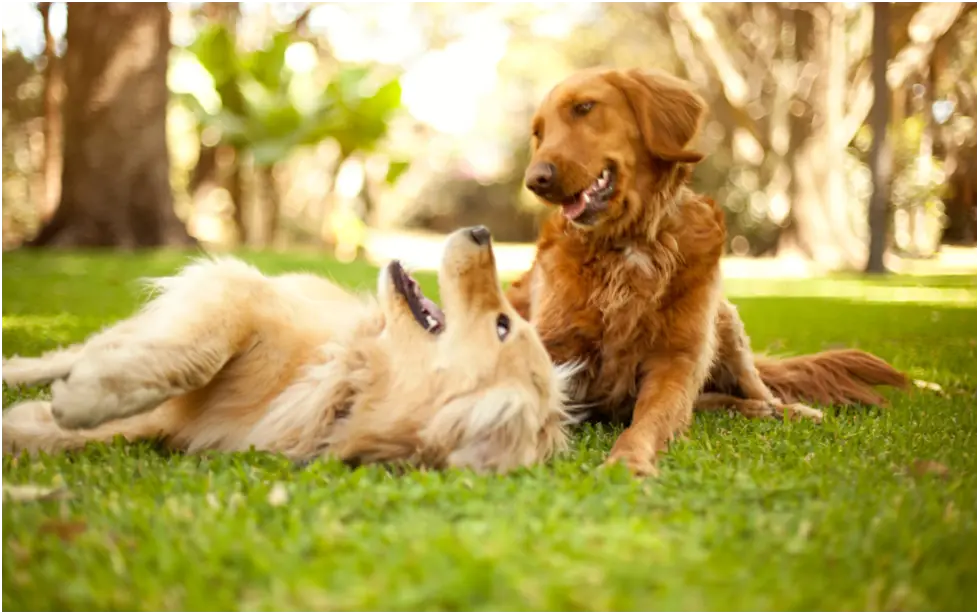The term “man’s best friend” is often used for dogs, and not simply because of the bond between man and dog. Dogs have a sophisticated Dogs Body Language for conveying their thoughts, desires, and intentions. Knowing how to read your dog’s body language is crucial for any dog owner or fan who wants to strengthen their bond with their pet and look out for their safety. We’ll dig into the intriguing realm of Dogs Body Language here, looking at the different signs and cues that dogs use to convey their emotions and thoughts.

Source: https://www.thedodo.com/dodowell/want-secure-resilient-dog-parent-way-study-says
Feelings Can Be Read Through Dogs Body Language
Dogs’ ears are excellent indicators of their emotional state. Some popular ear placements and their associated meanings are as follows:
- Holding one’s ears high and forward is a show of interest and focus. When your dog is interested in anything, they tend to be attentive and curious.
- When one’s ears are flattened against one’s skull, it’s usually a sign of worry, submission, or dread. Dogs will do this if they feel threatened or anxious about their surroundings.
- When a dog is confused or attempting to figure something out, they may arrange their ears in the charming “one ear up, one ear down” posture. Curiosity and doubt are intertwined in this feeling.
The “Puppy Eyes” And Other Ocular Features
A dog’s eyes, like a human’s, may reveal a variety of feelings. You may learn to read your dog’s intentions by the way he looks at you. Some popular facial expressions are as follows:
- Eyes that are smooth and calm show that a dog is at ease and happy. They are comfortable where they are and probably feel secure and content.
- When a dog looks at something or someone, they may exhibit the “whale eye” behavior, in which they reveal just the whites of their eyes. It’s a standard way to imply anxiousness, worry, or even terror. This behavior may be seen in dogs when they are anxious or feel threatened.
- Staring intently and for an extended period may be seen as a sign of anger or dominance, particularly when coupled with a tight body. It’s essential to use extreme caution with dogs that act in this way.
- Dogs may also use their eyes to beg for human interaction. Their human friends usually can’t resist them when they make this adorable face.
How Dogs Body Language the True Intentions?

Source: https://mycommunitypetclinic.com/dog-body-language/
The way a dog carries itself as a whole might reveal a lot about the canine’s state of mind. Multiple meanings may be communicated via Dogs Body Language:
- A dog’s traditional invitation to play is the “play bow,” in which the animal extends its front legs forward, lowers its head, and lifts its rear end. Dogs adopt this stance while engaging in playful behavior.
- To express submission or avoid confrontation, a dog may assume a crouching position with its head down and its tail tucked between its knees. When a dog or human does this, it’s an indication that they consider the other to be dominating or dangerous.
- On the other hand, a dog that is trying to establish its superiority may adopt a haughty stance in which it raises its head, chest, and tail. This stance is often observed in territorial displays or when a dog is attempting to assert dominance.
- When a dog feels threatened or trapped, it may take a protective attitude, such as rising on its hind legs to make itself seem more significant, raising its hackles, and baring its fangs. The dog is sending a loud and obvious message that it is prepared to protect itself.
How They Show Their Feelings through Aggressive and Stressed Dog Body Language?
What a dog is feeling and thinking may often be deduced from the appearance of its jaws and teeth. Recognizing these Stressed Dog Body Language or Aggressive Dog Body Language may help avoid misunderstandings and arguments:
- Licking one’s lips excessively, mainly when it’s not in response to hunger, maybe a sign of stress or worry. It’s a coping mechanism that helps anxious dogs relax.
- When dogs are nervous or uncomfortable, they typically yawn. An indication of stress is excessive yawning that is not caused by fatigue.
- When a dog snarls or growls and bares its teeth, it is expressing aggressiveness or pain. Their body language conveys the message, “Back off.”
- A calm dog often has its mouth closed. Anxiety and heat may both cause a dog to pant heavily with an open mouth.
When The Hair On Your Neck Raise Hackles?
A dog’s feathers, or the hair down its back, may stand on edge for several reasons:
- When a dog’s hackles go up, it’s because it’s agitated. The emotions of excitement, anxiety, or anger may all set this off. Paying attention to body language as a whole might help you understand the situation.
- The feathers of a dog that is comfortable in its skin will be down. That’s comforting to hear since it means they don’t feel intimidated or aroused.
Calls, Squeaks, And Other Noises
Dogs use both body language and vocalizations to convey meaning to one another. Learning the meanings behind your dog’s various vocalizations is a great way to get insight into their mental state:
- Dogs bark for many purposes, including to warn of danger, to attract attention, to show their joy, or to communicate hostility. You can figure out what someone means by looking at the context and their body language.
- Anxiety, worry, or a need for attention may all be indicators of whining. Puppies may use this method to talk to their mothers.
- When a dog shows signs of discomfort or fear, one of the most obvious warning signs is a growl. It’s an indicator of possible hostility. Therefore, you should take it seriously.
- Dogs howl when they hear sirens when they hear other dogs howling, or when they are lonely. It may serve as a method of long-distance dog communication.
Tail Position Than Waggling
We’ve already covered tail wagging, but a dog’s resting tail posture may also tell us a lot about their mood. The following are some common tail locations and their meanings:
- Confidence and vigilance may be shown in a tail held high. The same is true of dogs who are too confident or aggressive.
- As was previously indicated, a tucked tail is a sign of submission, nervousness, and fear. This is a protective behavior for dogs’ soft bellies.
- When a dog’s tail is at its average, relaxed level, it’s an indication that it’s happy and at ease.
Conclusion
Dogs utilize their acute sense of smell to interact with and learn about the world around them. Dogs often pee or defecate in designated areas to “mark” their territory and signal to other canines nearby. This is a frequent strategy for male dogs, notably to assert dominance and claim settlement.
The ability to read your dog’s body language is a must for every responsible pet owner. You’ll be able to communicate with your furry buddy more effectively, as well as understand and react to their wants and feelings. Consider the whole context to Train Your Dog and the mix of clues shown by the dog since body language is a sophisticated and subtle form of communication.
By understanding and responding to your dog’s nonverbal cues, you can improve your relationship with them and make sure they are happy and healthy. Taking the time to notice and understand your dog’s body language during your next interaction can help you develop a stronger bond with your four-legged buddy.
| You May Also Be Interested to Know- | |
| 1. | Vaccinating Puppies |
| 2. | Dog Food Brands India |
| 3. | Pet Care Hospital |




